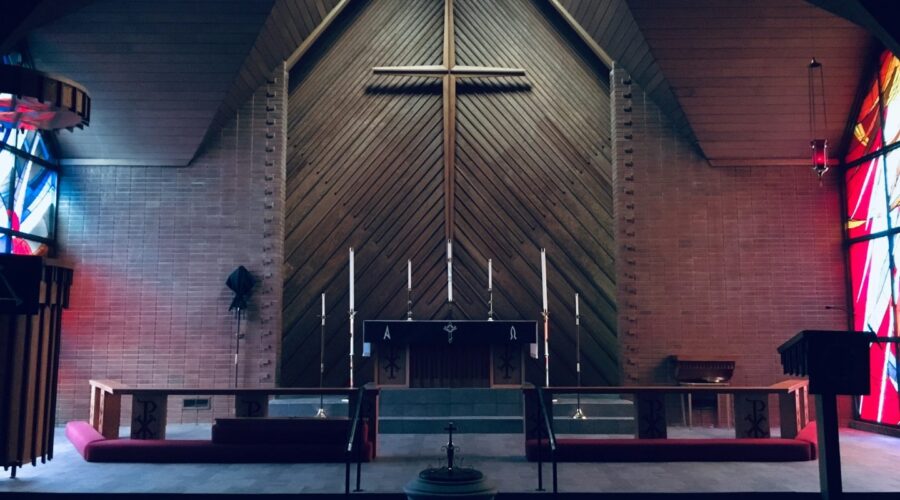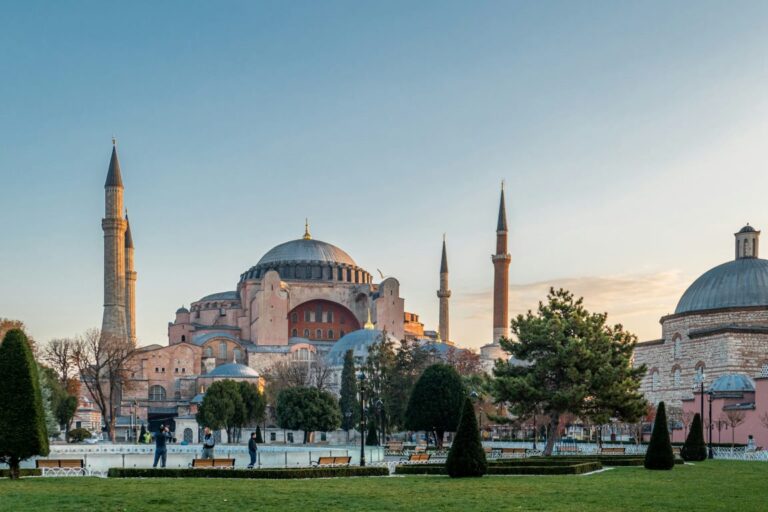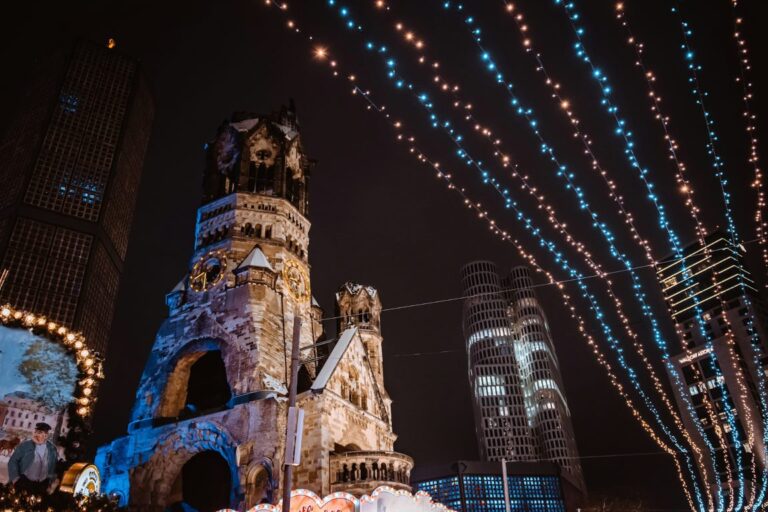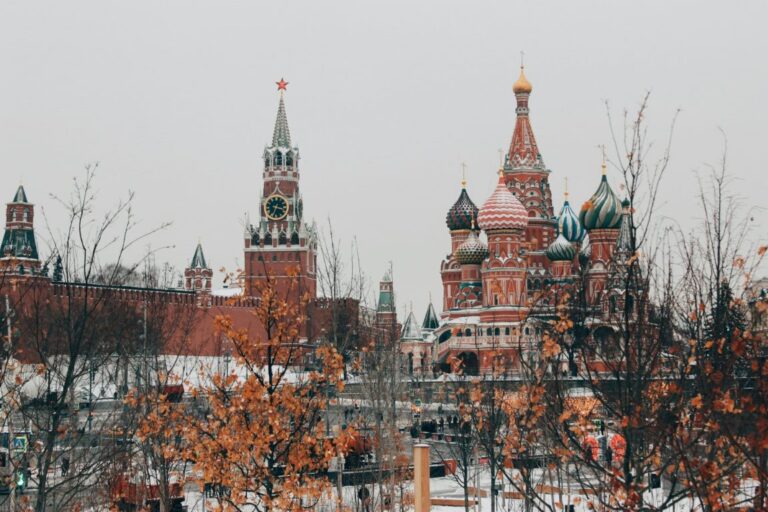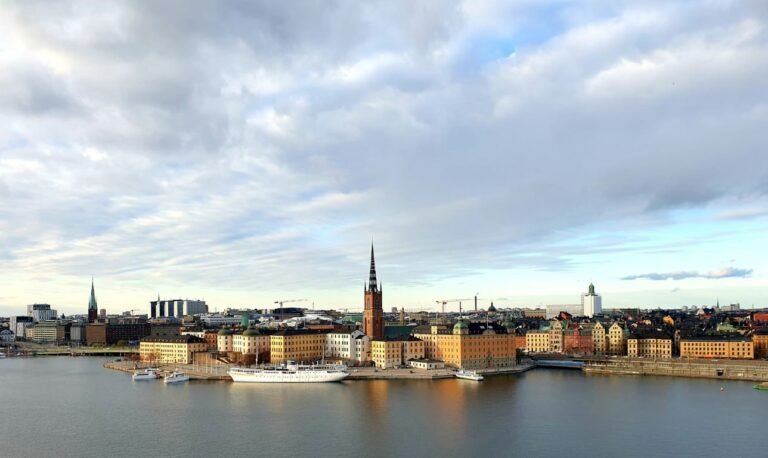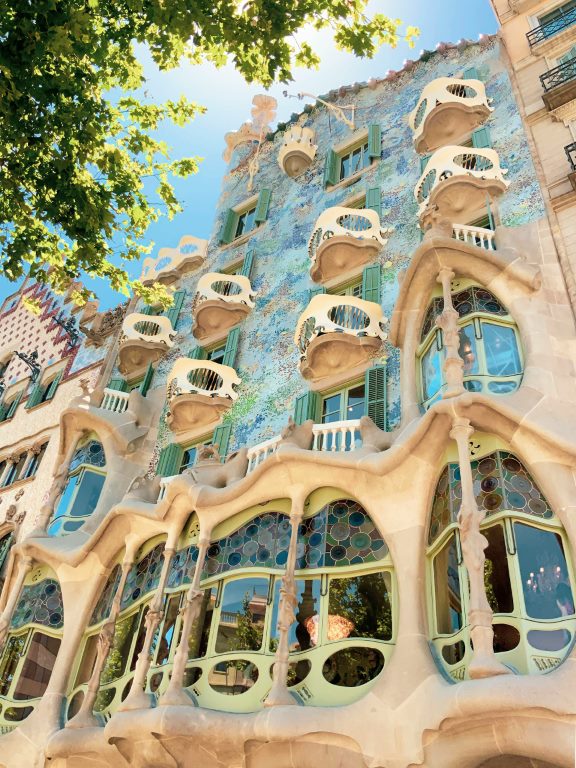Your cart is currently empty!
Search results for: “66”
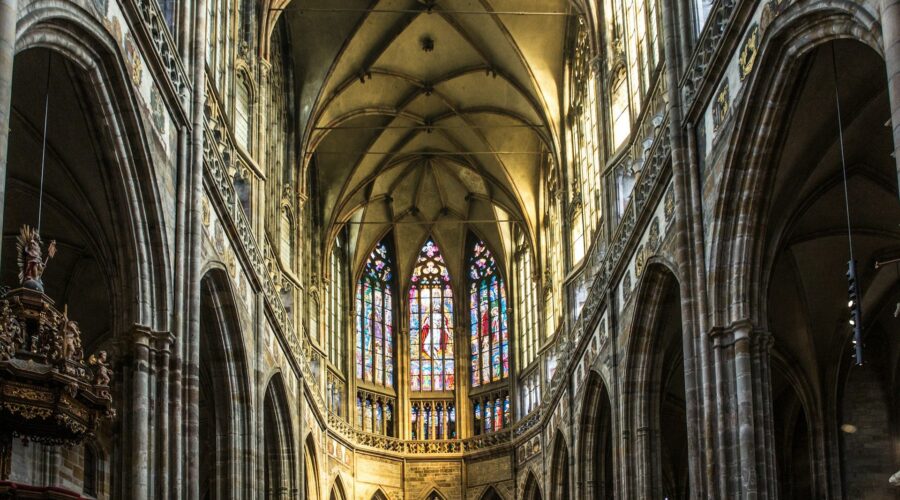
Christ Chapel: A Guide to One of London’s Most Stunning Churches
Christ Chapel, located in the heart of London, is an architectural masterpiece that has captivated visitors for centuries. Its rich history, stunning design, and unique character make it a must-see for anyone visiting the city. In this comprehensive guide, we will delve into the fascinating world of Christ Chapel, exploring its history, architecture, and significance in the city’s cultural landscape.
History
Christ Chapel’s origins can be traced back to the 16th century when it was founded as a chapel for the Guild of Vintners. The chapel underwent several renovations and expansions over the years, with the most significant being the rebuilding project initiated by Christopher Wren following the Great Fire of London in 1666. Wren’s design transformed the chapel into a stunning Baroque masterpiece that stands as one of his finest works.
Architecture
Christ Chapel is renowned for its exquisite Baroque architecture. The chapel’s exterior is characterized by a grand facade with a pediment supported by Ionic columns. The interior is equally impressive, featuring a nave with a barrel-vaulted ceiling adorned with intricate plasterwork and gilded mouldings. The focal point of the chapel is the magnificent altar, a masterpiece of carved wood and marble.
Key Architectural Features
* **Pediment with Ionic Columns:** The grand facade is adorned with a triangular pediment supported by elegant Ionic columns, giving the chapel a sense of imposing grandeur.
* **Barrel-Vaulted Ceiling:** The nave is covered by a barrel-vaulted ceiling decorated with intricate plasterwork and gilded mouldings, creating a sense of awe and opulence.
* **Altar:** The centerpiece of the chapel is the stunning altar, a masterpiece of carved wood and marble. The altar is adorned with elaborate carvings and a painting depicting the Last Supper.Significance
Christ Chapel has played a significant role in the cultural and religious life of London. Over the centuries, it has hosted numerous weddings, christenings, and funerals, and has served as a place of worship for the Guild of Vintners. The chapel has also been a popular tourist destination, drawing visitors from around the world to admire its stunning architecture.
Historical Events
* **Marriage of William Shakespeare and Anne Hathaway:** The chapel is believed to be the site of the marriage ceremony between William Shakespeare and Anne Hathaway in 1582.
* **Restoration after the Great Fire:** Following the Great Fire of London in 1666, the chapel was rebuilt by Christopher Wren, transforming it into a magnificent Baroque masterpiece.
* **Royal Weddings:** Christ Chapel has hosted several royal weddings over the centuries, including the marriage of Prince William and Kate Middleton in 2011.Visiting Christ Chapel
Christ Chapel is open to the public for visits and guided tours. Visitors can explore the chapel’s stunning interior, marvel at its architectural details, and learn about its fascinating history. The chapel also hosts regular services and events, providing opportunities for visitors to experience its vibrant spiritual community.
Visitor Information
* **Address:** 35 Newgate Street, London EC1A 7AA
* **Opening Hours:** Monday-Saturday: 10am-4pm; Sunday: 12pm-4pm
* **Guided Tours:** Guided tours are available on Tuesdays and Thursdays at 1pm.
* **Services:** Christ Chapel holds regular services on Sundays and weekdays. Check the website for the latest schedule.Additional Tips
* **Plan your visit in advance:** To avoid crowds, consider visiting during off-peak hours or on weekdays.
* **Take a guided tour:** Guided tours provide an in-depth insight into the chapel’s history and architectural significance.
* **Attend a service:** Experience the vibrant spiritual community of Christ Chapel by attending one of their regular services.
* **Explore the surrounding area:** Christ Chapel is located in the heart of the City of London, surrounded by historic buildings, charming streets, and renowned restaurants.Conclusion
Christ Chapel stands as a testament to the enduring power of architecture and the significant role that religious institutions have played in shaping London’s history, culture, and identity. Its stunning design, fascinating history, and vibrant spiritual community make it a must-visit destination for anyone seeking to delve into the heart of London’s rich heritage. Whether you are an architecture enthusiast, a history buff, or simply a curious traveler, Christ Chapel promises an unforgettable and awe-inspiring experience.
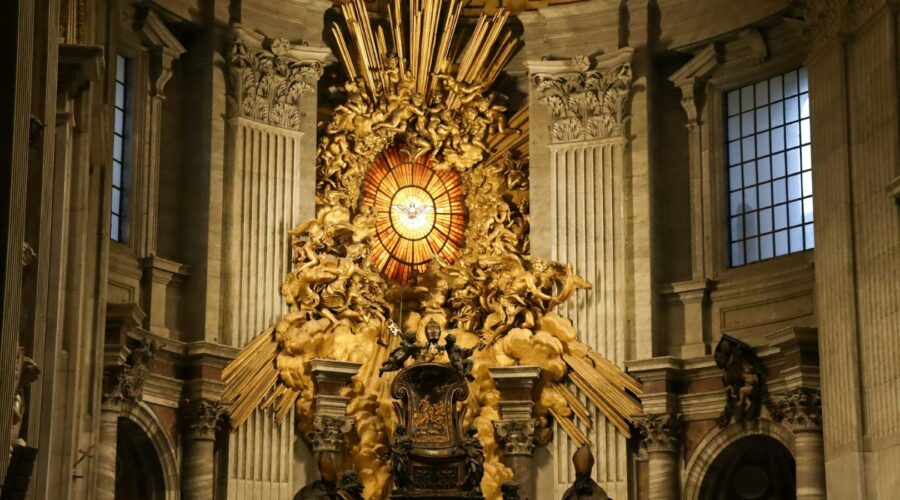
Unveiling the United States Conference of Catholic Bishops: A Comprehensive Guide
Introduction
The United States Conference of Catholic Bishops (USCCB) is a pivotal organization representing the Catholic Church in the United States. With its inception in 1966, the USCCB has played a significant role in shaping the Catholic faith, addressing societal issues, and advocating for its members.
Mission and Vision
- Mission: The USCCB exists to serve the Catholic Church in the United States by fostering unity, providing support, and addressing issues facing the Church and society.
- Vision: The USCCB aspires to be a catalyst for the Church’s mission, fostering a vibrant community of faith, promoting justice, and serving as a voice for the voiceless.
Structure and Governance
Hierarchy
The USCCB comprises:
- All active and retired Archbishops and Bishops of the Latin Rite
- Eparchs of the Eastern Rites
- Military Ordinaries for the United States
Organization
The USCCB is led by an elected President and Executive Committee, with the support of:
- Standing Committees
- Ad Hoc Committees
- Secretariats
- Offices
Activities and Initiatives
- Advocacy: The USCCB engages in legislative and public policy advocacy on issues such as healthcare, education, and immigration.
- Evangelization: The USCCB promotes evangelization and outreach efforts through various programs and initiatives.
- Ecumenical and Interfaith Dialogue: The USCCB fosters relationships with other Christian denominations and faith traditions.
- Education: The USCCB supports Catholic education through its Office of Education.
- Liturgical Development: The USCCB oversees the translation and adaptation of liturgical texts.
- Social Justice: The USCCB advocates for social justice and human dignity through its Office of Social Concerns.
Recent Initiatives
Role in the Catholic Church
The USCCB plays a crucial role within the Catholic Church by:
- Representing the American Catholic Church nationally and internationally
- Promoting unity and collaboration among dioceses
- Providing guidance and support to bishops and priests
- Addressing doctrinal and pastoral issues
Conclusion
The United States Conference of Catholic Bishops is an indispensable organization that serves as a collective voice for the Catholic Church in the United States. Through its wide-ranging activities and initiatives, the USCCB strives to spread the Gospel, promote justice, and advocate for the needs of its members and society as a whole.
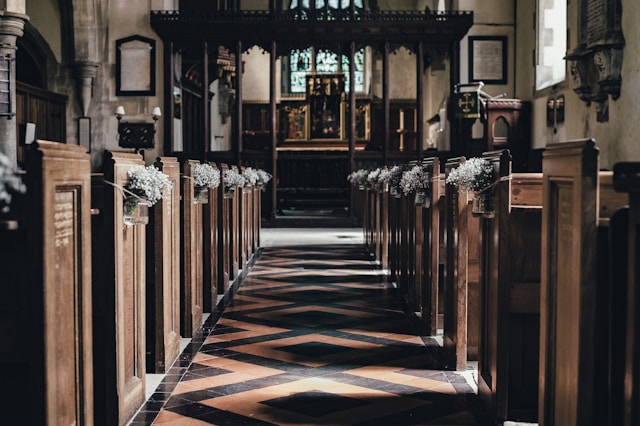
Pope Francis: A Comprehensive Guide to the Catholic Church’s Current Leader
Introduction
Pope Francis, the 266th pope of the Catholic Church, has been a transformative figure since his election in 2013. His humble demeanor, open-mindedness, and commitment to social justice have captivated people around the world. This guide will delve into Pope Francis’s life, papacy, and the significant impact he has made on the Catholic Church and beyond.
Early Life and Vocation
Jorge Mario Bergoglio was born in Buenos Aires, Argentina, on December 17, 1936. He studied chemical technology before entering the Society of Jesus (Jesuits) in 1958. He was ordained a priest in 1969 and served in various pastoral roles in Argentina.
Episcopal Ministry
In 1992, Bergoglio was appointed auxiliary bishop of Buenos Aires. He became archbishop in 1998 and cardinal in 2001. As archbishop, he focused on the poor and marginalized, advocating for social justice and dialogue with other faiths.
Papal Election and Pontificate
Election and Papal Name
On March 13, 2013, the College of Cardinals elected Bergoglio as the new pope. He took the name Francis, in honor of Saint Francis of Assisi, known for his humility and love for the poor.
Major Themes and Initiatives
- Social Justice and Poverty: Pope Francis has consistently emphasized the need to address global poverty and inequality. He has called for economic reforms, debt relief, and the care of the marginalized.
- Environmental Protection: The pope has been a vocal advocate for environmental protection and climate action. His encyclical Laudato Si’ (2015) called for ecological conversion and a radical change in human behavior towards the planet.
- Interfaith Dialogue: Pope Francis has made interfaith dialogue a priority. He has met with leaders of other religions, promoting mutual understanding and cooperation.
- Church Reform and Transparency: The pope has initiated reforms within the Catholic Church, including efforts to combat sexual abuse, promote financial transparency, and increase the participation of the laity in decision-making.
Encyclicals and Apostolic Exhortations
Encyclical/Exhortation Year Major Themes Lumen Fidei 2013 The nature of faith Evangelii Gaudium 2013 The joy of the Gospel and renewal of the Church Laudato Si’ 2015 Environmental protection and climate change Amoris Laetitia 2016 On love in the family Gaudete et Exsultate 2018 On the call to holiness in the modern world Impact on the Catholic Church
Pope Francis’s papacy has had a profound impact on the Catholic Church:
- Increased Openness and Inclusivity: Pope Francis has fostered a more welcoming and inclusive church, reaching out to marginalized groups, such as LGBTQ+ people.
- Emphasis on Evangelization: The pope has called for a missionary church, encouraging Catholics to share their faith and invite others into the church.
- Renewed Focus on Pastoral Care: Pope Francis has emphasized the importance of pastoral care, encouraging priests to be close to their communities and to accompany people in their faith journeys.
Impact on the Wider World
Pope Francis’s message has resonated beyond the Catholic Church, reaching people of different faiths and backgrounds:
- Global Advocate for Peace: The pope has used his platform to denounce violence and promote peace worldwide.
- Voice for the Poor and Marginalized: Pope Francis has become a powerful voice for the poor, calling for an end to poverty and inequality.
- Environmental Leadership: His encyclical Laudato Si’ has inspired environmental movements and raised awareness about the need to protect the planet.
Challenges and Controversies
While Pope Francis has been widely praised, his papacy has not been without challenges and controversies:
- Internal Disagreements: Some traditionalist Catholics have criticized Pope Francis’s reforms and teachings, claiming he is straying from the Church’s doctrine.
- Sexual Abuse Crisis: The pope has faced criticism for his handling of the sexual abuse crisis within the Catholic Church.
- Relationship with China: Pope Francis’s efforts to improve relations with China have faced obstacles and raised concerns about religious freedom in the country.
Conclusion
Pope Francis has been a transformative figure in the Catholic Church and beyond. His humble demeanor, commitment to social justice, and emphasis on interfaith dialogue have captivated people worldwide. While his papacy has faced challenges, he has left a lasting impact on the Church and the wider world. Pope Francis’s legacy is likely to be debated for years to come, but there is no doubt that he will be remembered as one of the most influential popes in history.
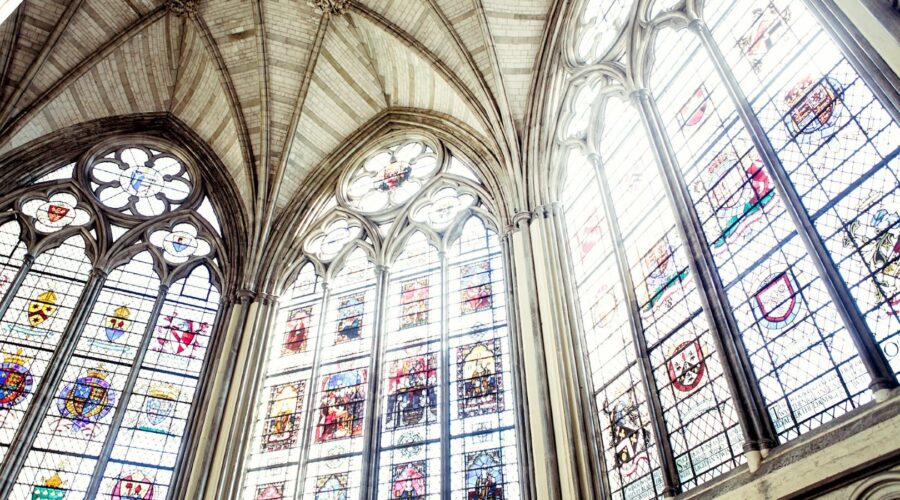
GriefShare: A Comprehensive Guide for Navigating Loss and Healing
Introduction
Grieving the loss of a loved one is an incredibly painful and overwhelming experience. GriefShare is a Christ-centered support group designed to provide a safe and compassionate space where individuals can connect with others who have experienced similar losses and learn practical coping mechanisms.
What is GriefShare?
GriefShare is a non-profit organization that offers a 13-week support group program for individuals grieving the loss of a loved one. The program is led by trained facilitators who have themselves experienced the pain of loss.
Each week, participants gather for a two-hour session that includes:
- Personal sharing and discussion
- Video teaching on a specific topic related to grief
- Small group discussions
- Silent prayer time
Who is GriefShare For?
GriefShare is open to anyone who has lost a loved one, regardless of their age, faith, or circumstances. It is particularly beneficial for individuals who are struggling to cope with their grief or who feel isolated and alone.
The Benefits of GriefShare
Participating in GriefShare can provide numerous benefits for grievers, including:
- Connection with others: GriefShare offers a supportive community where individuals can connect with others who understand what they are going through.
- Validation of emotions: GriefShare provides a safe space where grievers can express their emotions without judgment.
- Practical coping mechanisms: GriefShare teaches practical strategies for managing the challenges of grief.
- Spiritual support: GriefShare incorporates a spiritual component that can provide comfort and strength to those who are seeking it.
- Hope for the future: GriefShare helps grievers begin to envision a future beyond their loss.
How to Find a GriefShare Group
To find a GriefShare group near you, visit the GriefShare website.
Additional Resources
In addition to GriefShare, there are other resources available to help individuals cope with grief, including:
- National Suicide Prevention Lifeline: 1-800-273-8255
- Crisis Text Line: Text “HOME” to 741-741
- The Trevor Project: 1-866-488-7386
Conclusion
Grieving the loss of a loved one is a challenging journey. GriefShare provides a supportive and compassionate environment where grievers can connect with others, learn coping mechanisms, and find hope for the future. If you are struggling with grief, consider joining a GriefShare group near you.
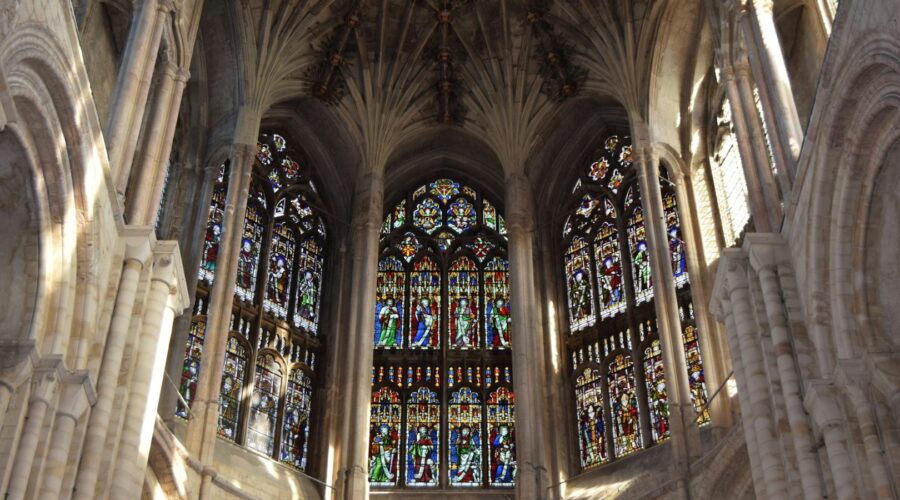
St. Paul’s Cathedral: A Timeless Architectural Masterpiece
Introduction
Nestled in the heart of London, St. Paul’s Cathedral stands as a testament to architectural brilliance and spiritual significance. This iconic landmark has witnessed centuries of history and remains a beloved destination for both locals and visitors alike.
History
Ancient Origins
The site of St. Paul’s Cathedral has been a place of worship since at least the 7th century. It is believed that a church was first built here in 604 AD by King Ethelbert of Kent.
Saxon and Norman Cathedrals
Over the centuries, the original church underwent several renovations and expansions. In the 10th century, a Saxon cathedral was built, followed by a Norman cathedral in the 11th century.
The Great Fire of London
In 1666, the Great Fire of London destroyed most of the city, including the Norman cathedral. The reconstruction of the cathedral was entrusted to the renowned architect Sir Christopher Wren.
Architecture
Sir Christopher Wren’s Masterpiece
Wren’s design for St. Paul’s Cathedral is widely considered one of his greatest works. The cathedral is a masterpiece of Baroque architecture, characterized by its grand scale, harmonious proportions, and elaborate ornamentation.
The Dome
The most striking feature of the cathedral is its towering dome. Measuring 365 feet (111 meters) in height, the dome is a marvel of engineering and artistry. It is constructed using a double shell, with the inner dome resting on a series of pendentives.
The Nave and Choir
The interior of the cathedral is equally impressive. The nave and choir are divided by a massive screen, known as the rood screen. The nave is lined with rows of Corinthian columns, supporting a coffered ceiling decorated with intricate carvings.
The Altar and Presbytery
The altar and presbytery are located at the eastern end of the cathedral. The altar is a focal point of worship, adorned with precious metals and gemstones. The presbytery is the area reserved for the clergy during services.
Religious Significance
Cathedral of the Church of England
St. Paul’s Cathedral is the seat of the Bishop of London and the mother church of the Diocese of London. It is one of the most important cathedrals in the Church of England.
Royal Weddings and Funerals
The cathedral has hosted numerous royal weddings and funerals over the centuries. Notable examples include the weddings of Prince Charles and Lady Diana Spencer in 1981, and Prince William and Kate Middleton in 2011.
Symbol of Remembrance
St. Paul’s Cathedral has become a symbol of remembrance and national unity. It played a prominent role in the aftermath of both World Wars, hosting memorial services and commemorations.
Visitor Information
Admission and Opening Hours
- Admission tickets are required to visit the cathedral’s interior and climb the dome.
- The cathedral is open daily, except during services.
Tours and Events
Guided tours are available, providing insights into the cathedral’s history, architecture, and religious significance.
The cathedral also hosts a variety of events throughout the year, including concerts, exhibitions, and services.
Accessibility
St. Paul’s Cathedral is wheelchair accessible, with ramps and lifts available.
Conclusion
St. Paul’s Cathedral is a magnificent architectural marvel and a symbol of religious, cultural, and national significance. Its timeless beauty and enduring legacy continue to inspire and awe visitors from around the world.
Further Reading
St. Paul’s Cathedral Official Website
Visit London: St. Paul’s Cathedral
How to Claim a Church
- First, search for the listing you want to claim, you can type in the name of the city or the name of the church. In our example, we are searching for “Chicago”.
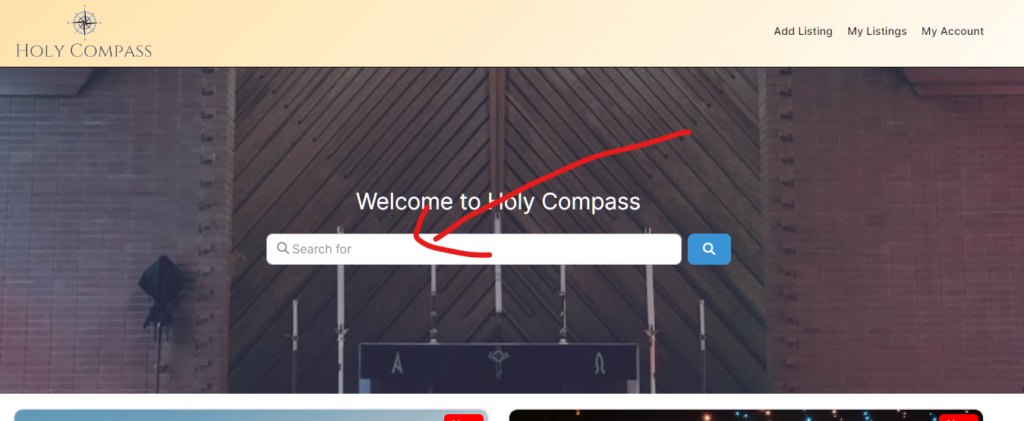
2. You will see a list of all the places of worship that we have registered with the address. Like this you won’t have to manually type in the correct address, you can just select your listing and the title, address and phone number is already there. In our example, we are taking the “Zen Buddhist Temple – Chicago”.
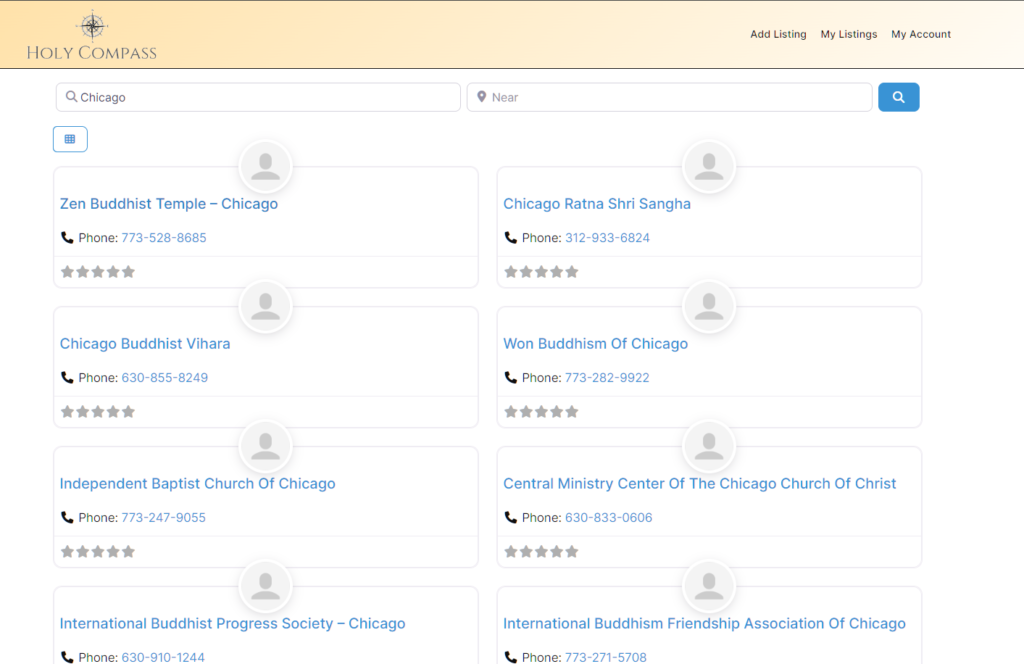
3. You will see the “Claim Listing”-Button in the bottom right (on Desktop). Click the button to claim the listing.
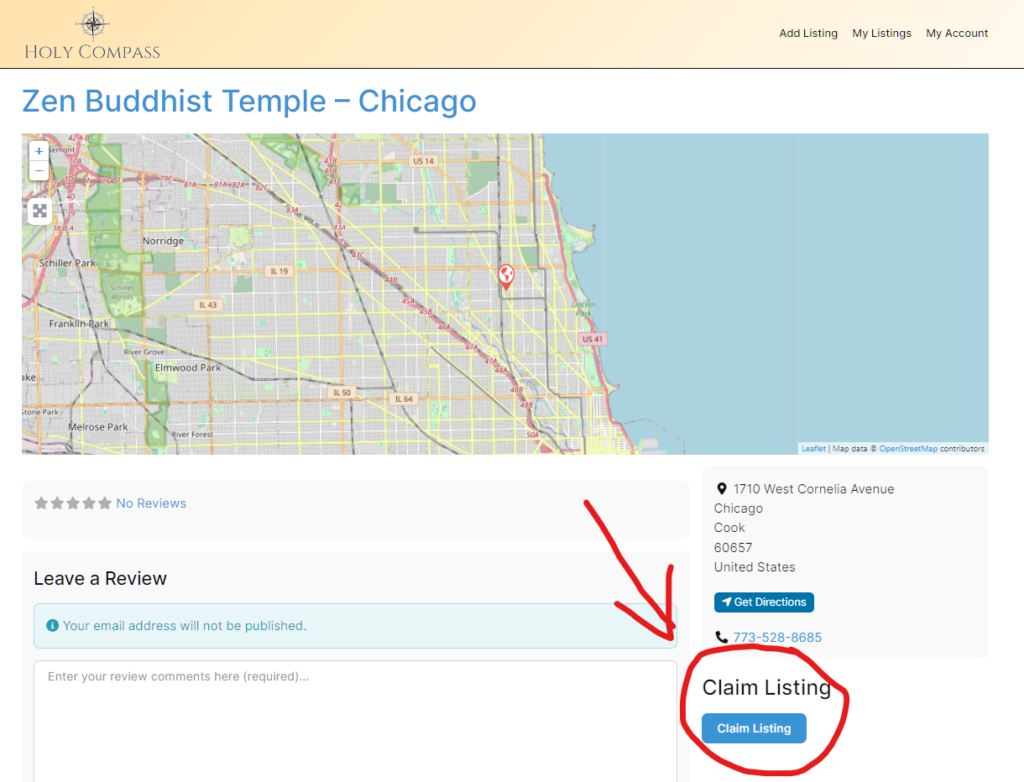
4. The “Claim Listing”-Button will lead to a registration form. There you have to fill out a Username, your Email, set a password and click on “Create Account”.
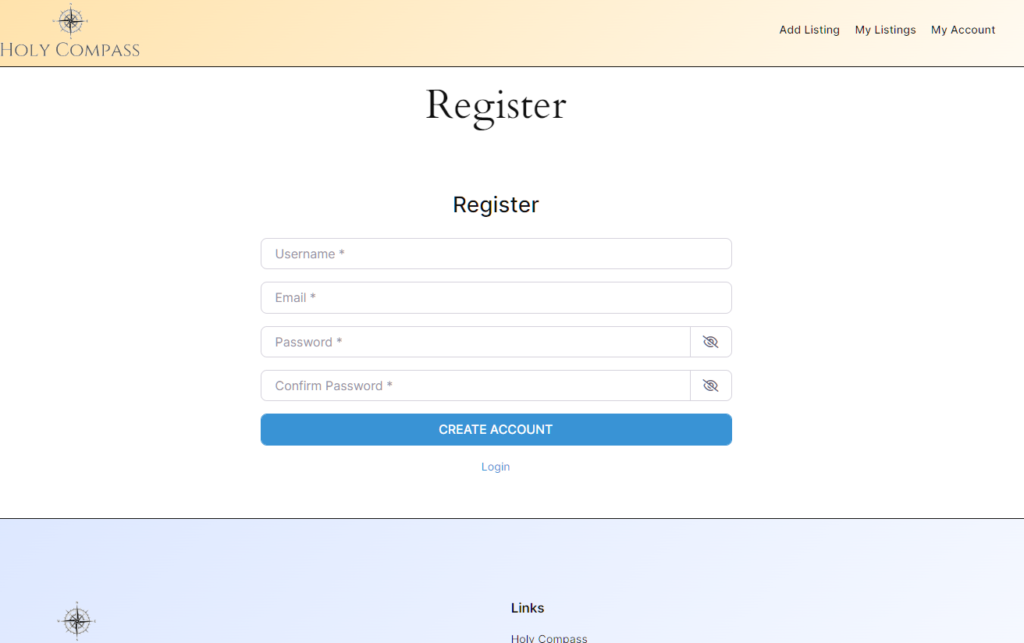

5. After you filled out your details, you will be logged in automatically and redirected to the listing where you clicked the “Claim Listing”-Button. There you will see a pop up with the “Claim Listing”-Form.

6. After filling out your details, click on send.

7. In order to claim the listing, you will have to complete the payment, you see the green link that says “Checkout”, you have to click on that.

8. The “Checkout” link will lead to the checkout page where you can purchase the listing.

9. After you completed the payment, you will see the order confirmation page. From there, click on the “My Listings”-Menu Button in the top menu.
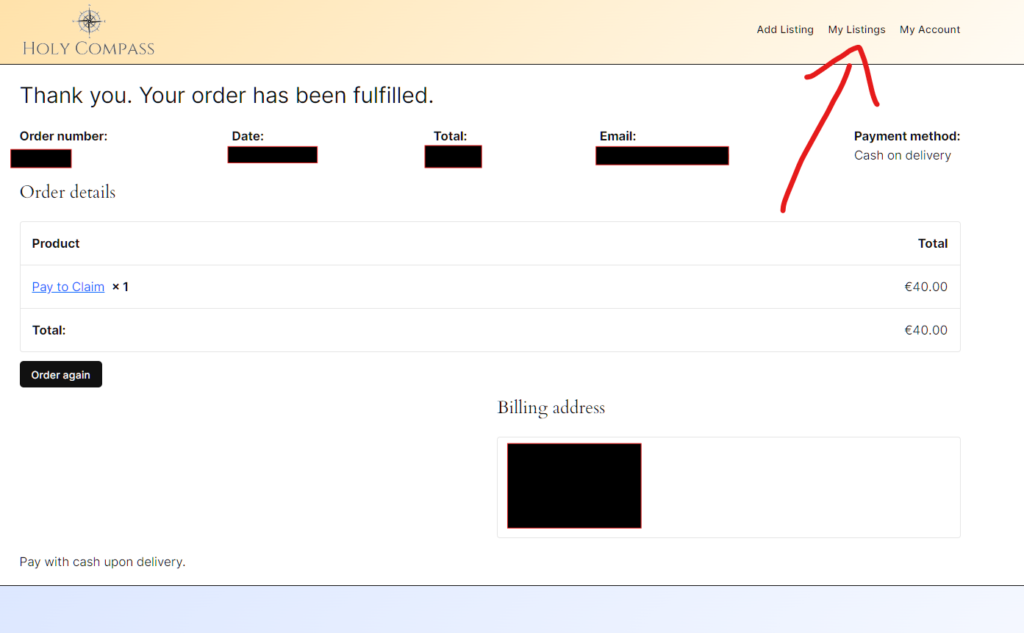
10. On the “My Listings”-page you will see the listing you just purchased. Click on the blue link of the listing.
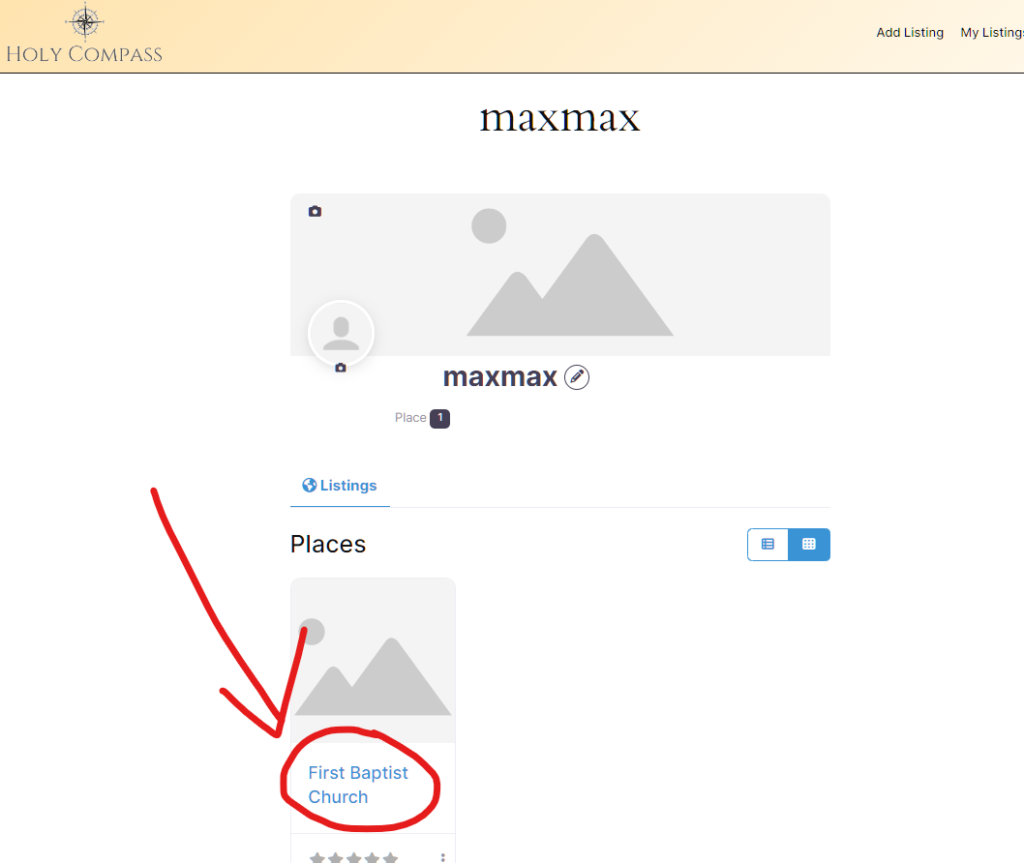
11. You will see the listing that you just purchased, but now it doesn’t show the “Claim Listing”-button anymore, instead it shows you an “Edit”-button, click on it to edit the listing.
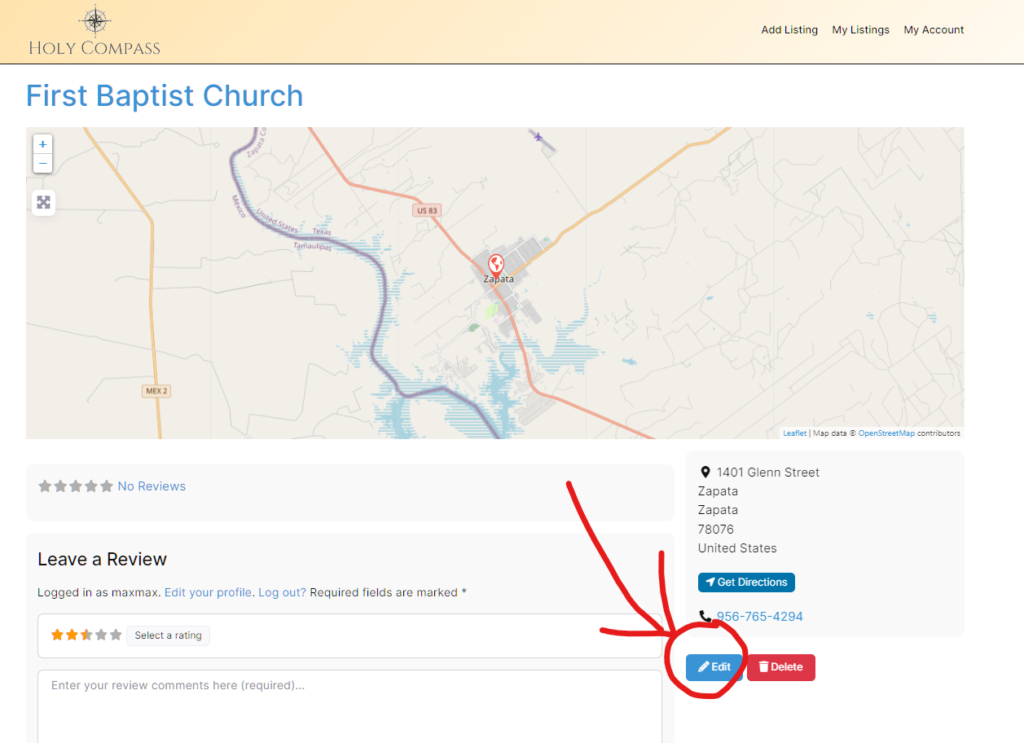
12. Now you can edit the listing and fill out the missing information.
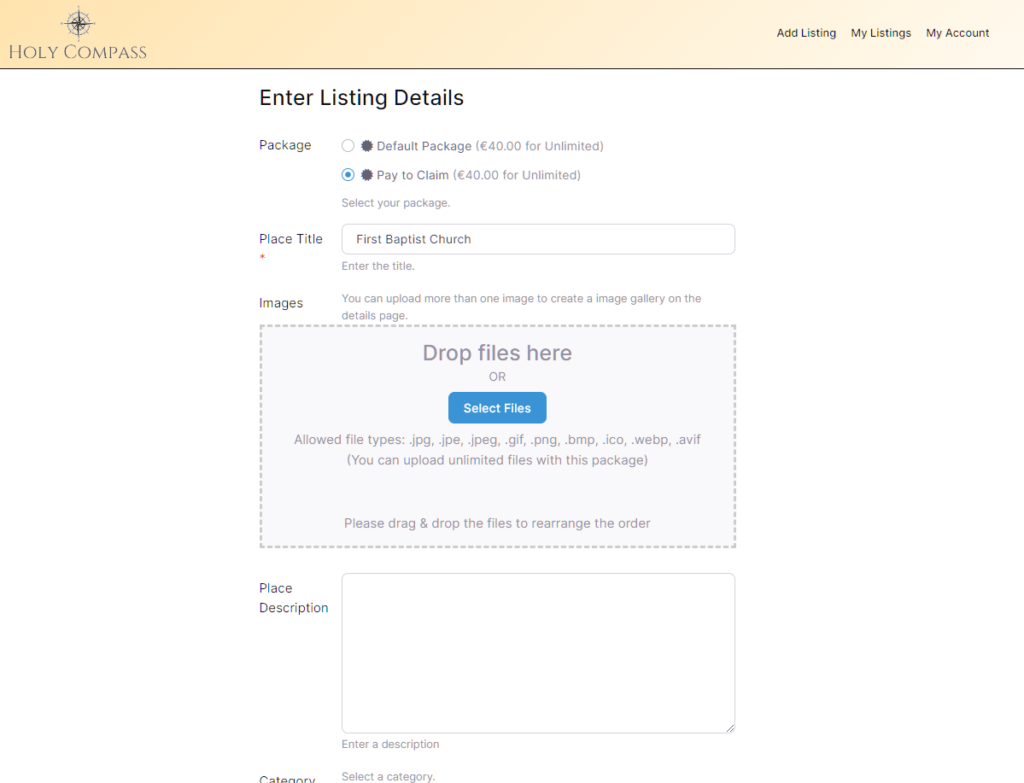
13. After you added your information, you can click on “Submit Listing” in the bottom of the page.

14. Your changes are live immediately, you can click on the blue “here” link to see your listing.

That’s it. If you have questions, please write us an email under: [email protected]
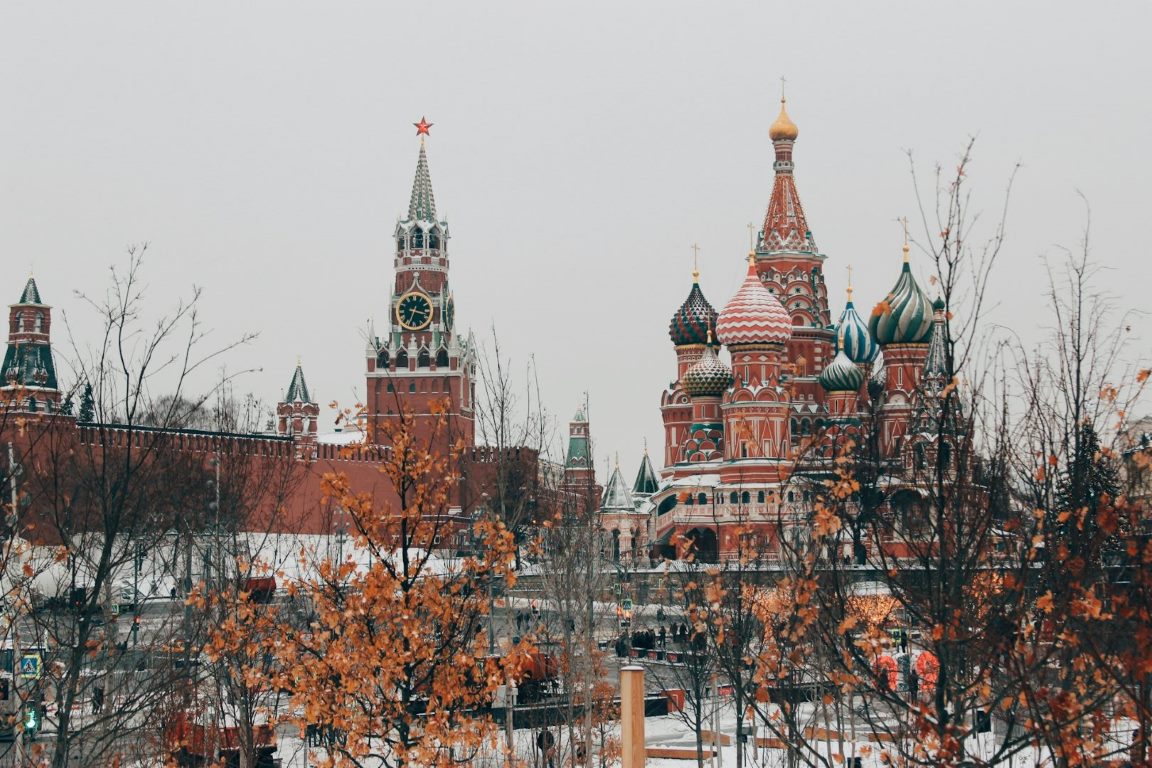
St Vladimir’s Church Moscow
St. Vladimir’s Church, Moscow: A Historical and Spiritual Landmark
St. Vladimir’s Church in Moscow, also known as the Church of St. Vladimir in the Old Gardens (Церковь Святого Владимира в Старых Садах), is a renowned Russian Orthodox church located in the Basmanny District of Moscow, near the Ivanovsky Convent and the confluence of the Yauza and Moskva rivers. This historic church, with its rich architectural and cultural heritage, stands as a testament to Russia’s deep-rooted Orthodox Christian traditions.
Historical Background
The origins of St. Vladimir’s Church date back to the early 15th century. Initially constructed as a palace church for Vasily I, it served as a place of worship for Russian royals until the ascension of the Romanov dynasty. The church’s significance grew over the centuries, reflecting the historical and spiritual evolution of Moscow.
The church we see today was erected in the 1660s on the foundations of the original structure. This deliberately archaizing building retains elements from an earlier church designed by Aloisio the New for Vasily III in 1514. One of the most distinctive features is the south porch, a remnant of Aloisio’s design. The church also boasts a unique belfry, which underwent significant modifications during the reign of Catherine the Great.
Architectural Marvels
St. Vladimir’s Church is renowned for its pentacupolar design, a hallmark of traditional Russian Orthodox architecture. The church’s exterior is characterized by its elegant white stone facade, which contrasts beautifully with the surrounding urban landscape. Perched on a small hill, the church offers a stunning view of this part of Moscow, making it a popular spot for both locals and tourists.
Inside, the church is filled with light, thanks to its large iconostasis and the cleverly designed recesses around the windows. These architectural features not only enhance the aesthetic appeal but also create a serene and contemplative atmosphere for worshippers. A small flower garden around the church adds to its charm, providing a peaceful retreat in the heart of the bustling city.
Challenges and Restoration
The history of St. Vladimir’s Church is not without its challenges. During the Soviet era, the church was closed and repurposed as a book storage facility. Its domes were dismantled, and a devastating fire in 1980 destroyed the remaining frescoes. However, the resilience of the Russian Orthodox Church and its parishioners led to a thorough restoration in the 1990s. Today, St. Vladimir’s Church stands as one of the most prosperous parishes in Moscow, having been lovingly repaired and refurnished to restore its former glory.
The restoration efforts have successfully preserved the church’s architectural integrity while also addressing the damage inflicted during the Soviet period. The bell tower, with its pyramidal spire, has been meticulously restored, although it still bears slight signs of the past predatory attitude towards religious structures. The interior is now bright and welcoming, with a large iconostasis and thoughtfully designed spaces for worship and contemplation.
Architectural and Artistic Highlights
The church’s interior is as remarkable as its exterior. The large iconostasis, a focal point within the church, is adorned with intricate icons and religious artifacts. This rich decoration reflects the deep spiritual and artistic traditions of the Russian Orthodox Church. The church’s interior spaces are designed to enhance the liturgical experience, creating a space that is both sacred and aesthetically pleasing.
The surrounding grounds, with their carefully maintained flower garden, add to the overall ambiance of the church. This natural setting provides a serene backdrop for contemplation and prayer, enhancing the spiritual experience for visitors and parishioners alike.
St. Vladimir: The Patron Saint
St. Vladimir’s Church is dedicated to the memory of St. Vladimir, also known as Vladimir the Great, who played a pivotal role in the Christianization of Kievan Rus’. Born a pagan, Vladimir’s life took a transformative turn when he decided to explore various faiths to determine the true religion. His envoys’ encounter with the divine liturgy in Constantinople led to his baptism and the subsequent Christianization of his realm.
St. Vladimir’s conversion marked a significant shift in the religious landscape of Eastern Europe. He destroyed pagan idols and replaced them with churches, fostering the spread of Orthodox Christianity. Today, he is remembered and venerated for his pivotal role in the establishment of the Russian Orthodox Church.
Modern-Day Significance
Today, St. Vladimir’s Church continues to be a vibrant center of worship and community life. The church holds regular services, including the Divine Liturgy, which attracts a large congregation. The church’s parish is active in various social and charitable activities, reflecting the enduring legacy of its patron saint.
The church also serves as a cultural and historical landmark, drawing visitors from around the world who come to admire its architectural beauty and learn about its rich history. Guided tours provide insights into the church’s past, its architectural features, and its role in the spiritual life of Moscow.
Visiting St. Vladimir’s Church
St. Vladimir’s Church is easily accessible and is located in the heart of Moscow, making it a must-visit for anyone interested in Russian history, architecture, or spirituality. Visitors are welcome to attend services, explore the church’s interior, and enjoy the peaceful garden that surrounds it.
The church’s proximity to other historic sites, such as the Ivanovsky Convent and the confluence of the Yauza and Moskva rivers, makes it an ideal starting point for exploring the rich cultural heritage of Moscow. Whether you are a devout Orthodox Christian or a curious traveler, a visit to St. Vladimir’s Church promises to be a memorable and enriching experience.
Other Churches Named St. Vladimir
While the focus of this article is on St. Vladimir’s Church in Moscow, it’s worth noting that there are other significant churches named after St. Vladimir in various parts of the world. For example, the Church of the Vladimir Icon of the Mother of God in St. Petersburg is one of the oldest churches in the city, featuring a unique combination of baroque and classical architectural styles. Another notable example is the Orthodox Church of St. Vladimir in Mariánské Lázně, which was built between 1900 and 1902 and features a richly decorated iconostasis.
In the United States, the St. Knyaz Vladimir Russian Orthodox Church in Miami, Florida, serves as a spiritual home for the Russian Orthodox community. Additionally, the St. Vladimir Memorial Church in New Jersey commemorates the 1000th anniversary of the Baptism of Rus’ by Prince Vladimir and offers a range of services and community activities.
Conclusion
St. Vladimir’s Church in Moscow stands as a testament to the enduring legacy of Russian Orthodox Christianity. Its rich history, stunning architecture, and spiritual significance make it a cherished landmark in the heart of Moscow. As it continues to thrive as a center of worship and community, St. Vladimir’s Church remains a beacon of faith and resilience, inspiring all who visit its sacred grounds.
For more information about the history and significance of St. Vladimir’s Church, visit the Wikipedia page. To read visitor reviews and experiences, check out the TripAdvisor page. To explore the broader context of Russian Orthodox churches, visit the St. Petersburg churches page, the Mariánské Lázně page, the Miami church page, and the New Jersey church page.
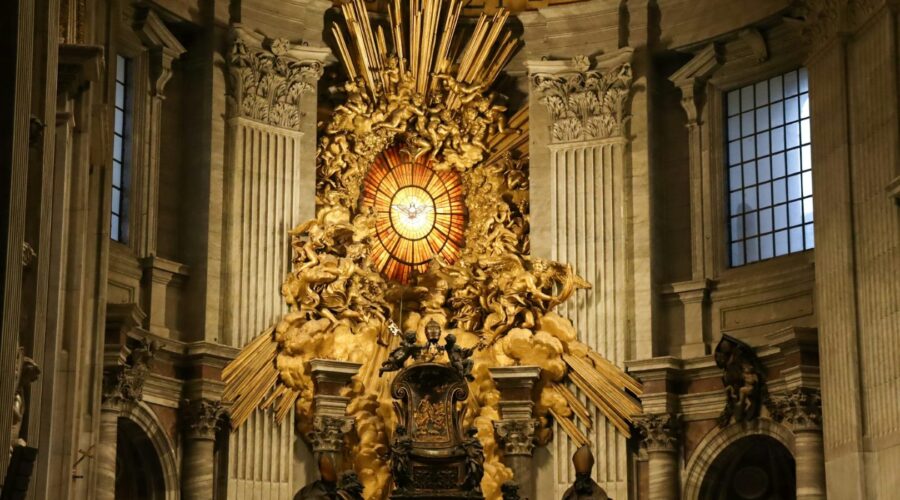
The Evolution of Church Architecture: From Ancient to Modern Times
Church architecture has evolved significantly over the centuries, reflecting changes in religious practices, cultural influences, and technological advancements. From the grandeur of ancient basilicas to the simplicity of modern churches, each architectural style tells a story of the time in which it was built. In this blog post, we will explore the fascinating evolution of church architecture, highlighting key styles and their defining characteristics.
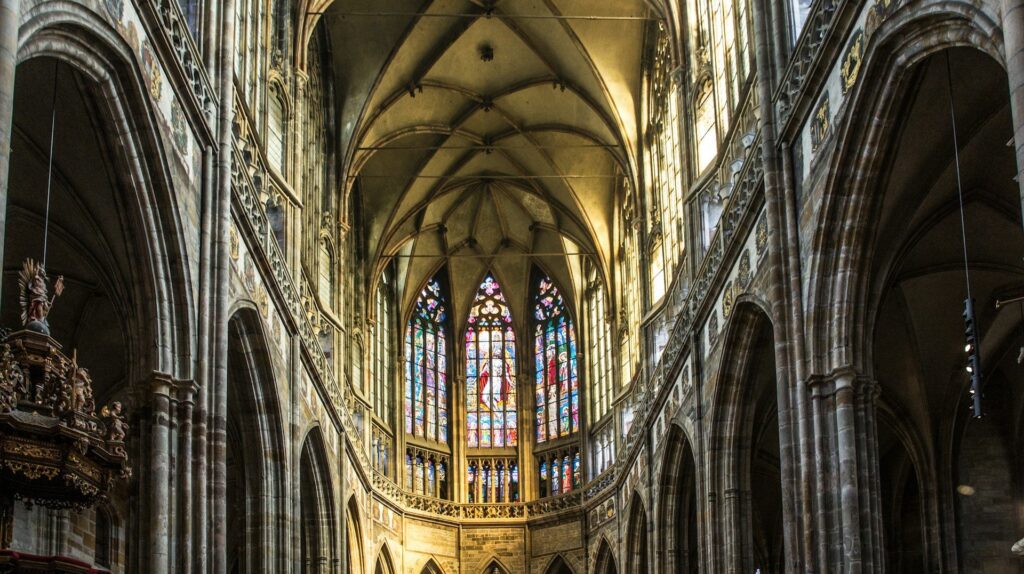
1. Early Christian Architecture
Historical Background
Early Christian architecture, dating from the 4th to the 6th centuries, marked the beginning of church building as we know it today. With the legalization of Christianity under Emperor Constantine, Christians were able to construct large public places of worship.
Key Features
- Basilica Plan: Early churches were often modeled after Roman basilicas, featuring a rectangular layout, a central nave flanked by aisles, and an apse at one end.
- Simple Exteriors: The exteriors were typically plain, with little decoration, reflecting the early Christian emphasis on inner spiritual life.
- Mosaics and Frescoes: Interiors were adorned with religious mosaics and frescoes, depicting biblical scenes and saints.
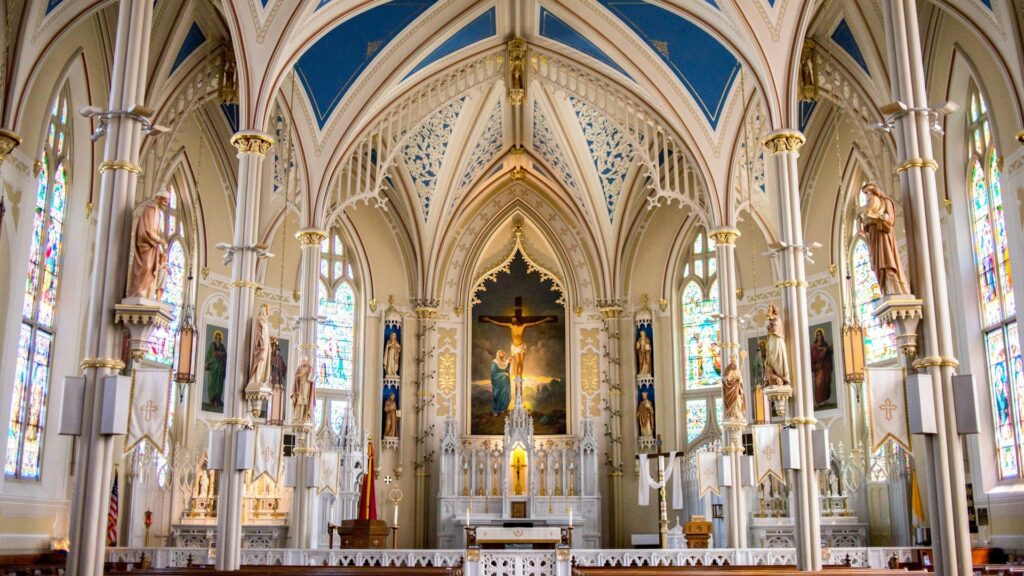
2. Romanesque Architecture
Historical Background
Romanesque architecture emerged in the 10th century and lasted until the 12th century. This style is characterized by its massive quality, thick walls, and sturdy construction, which were practical for the tumultuous times of the early medieval period.
Key Features
- Rounded Arches: Romanesque churches are known for their rounded arches, both in windows and doorways.
- Barrel Vaults: The use of barrel vaults and groin vaults allowed for stronger and more fire-resistant roofs.
- Thick Walls and Small Windows: These features provided the necessary support for heavy stone roofs and created a sense of solidity and fortification.
- Decorative Elements: Sculpture and relief carvings depicting biblical stories and symbolic motifs were common around doorways and capitals.
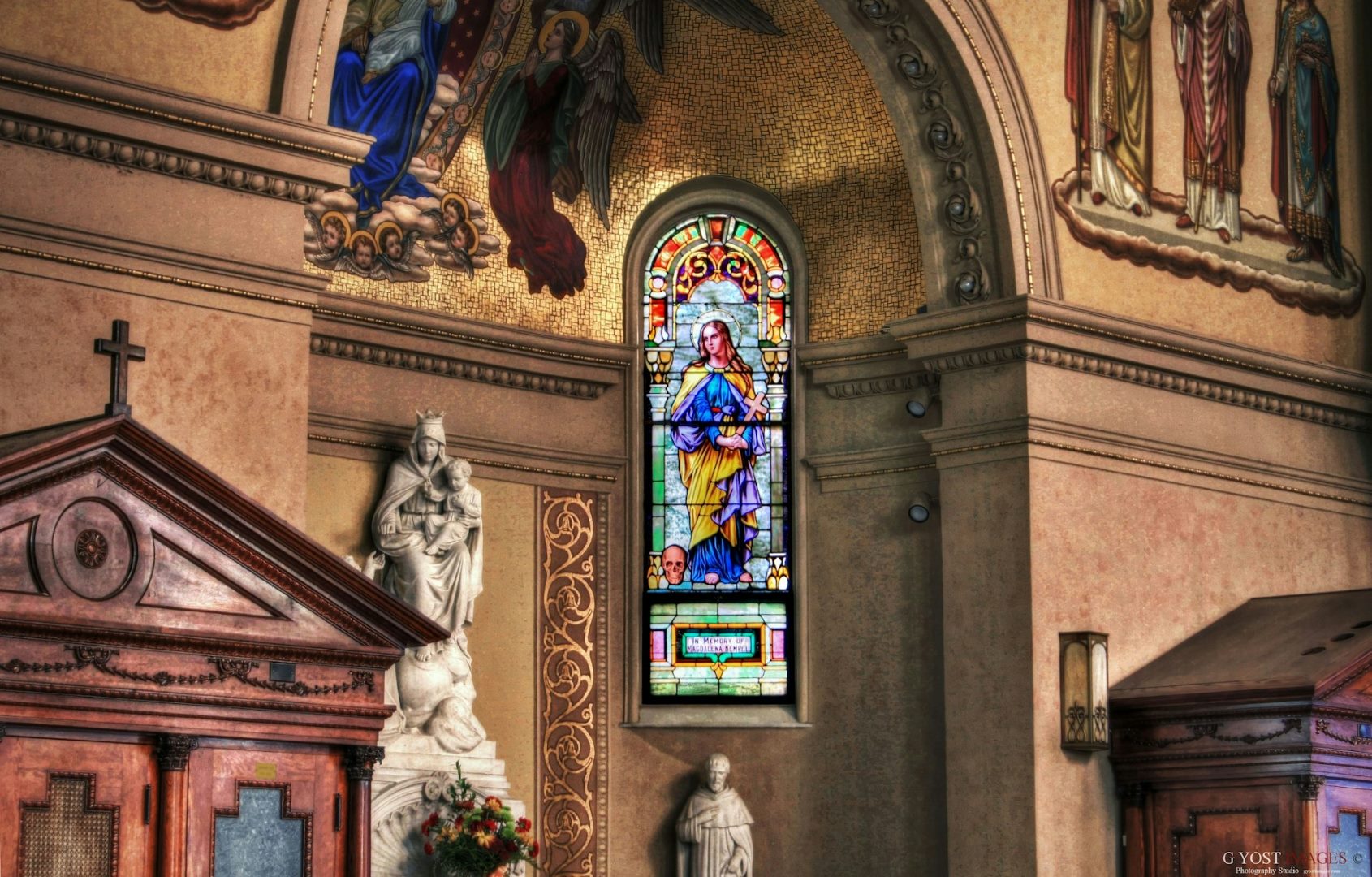
3. Gothic Architecture
Historical Background
Gothic architecture developed in the 12th century and flourished until the 16th century. It represented a shift towards more vertical and light-filled structures, aiming to inspire awe and draw the eyes heavenward.
Key Features
- Pointed Arches: The use of pointed arches allowed for greater height and more complex structures.
- Ribbed Vaults: Ribbed vaults distributed the weight of the roof more efficiently, enabling the construction of taller and more elaborate buildings.
- Flying Buttresses: External supports called flying buttresses allowed for thinner walls and larger windows.
- Stained Glass Windows: Large stained glass windows, often depicting biblical narratives, flooded the interiors with colorful light.
- Ornate Facades: The facades of Gothic churches were highly decorative, featuring intricate stone carvings, gargoyles, and statues of saints.
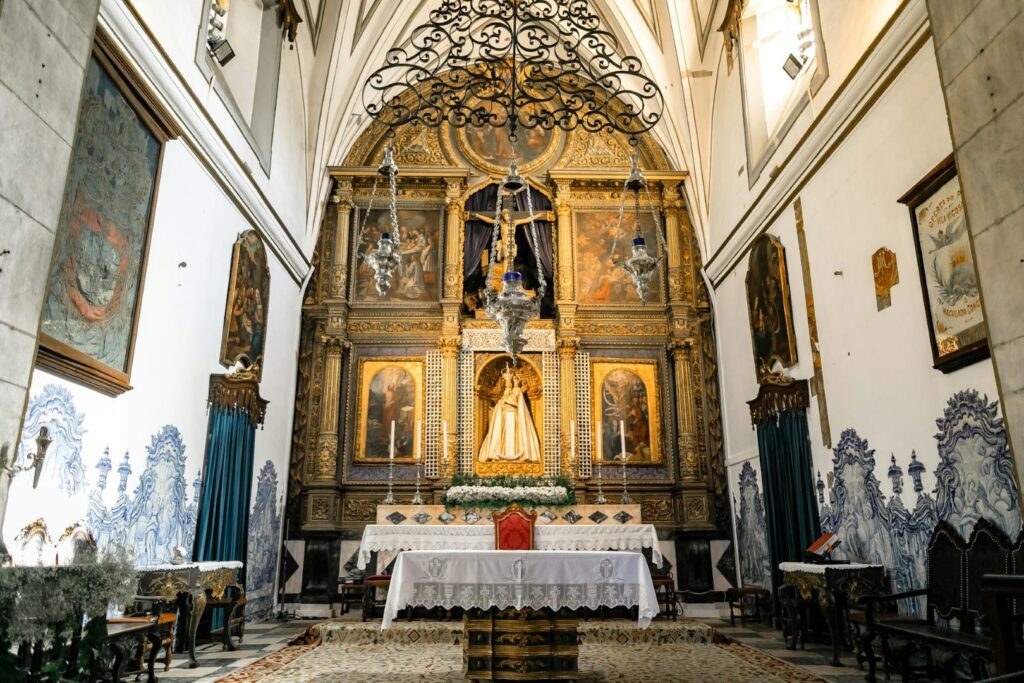
4. Renaissance and Baroque Architecture
Historical Background
The Renaissance (14th to 17th centuries) and Baroque (17th to 18th centuries) periods brought new styles influenced by classical antiquity and the desire for dynamic, expressive designs.
Key Features of Renaissance Architecture
- Symmetry and Proportion: Renaissance churches emphasized balance, symmetry, and proportion, drawing inspiration from the architecture of ancient Rome and Greece.
- Domes and Columns: The use of domes, columns, and pilasters became prominent, often combined with classical pediments and entablatures.
- Geometric Layouts: Church layouts often featured centralized plans or modified basilica plans, with an emphasis on harmony and clarity.
Key Features of Baroque Architecture
- Dramatic and Theatrical: Baroque architecture is characterized by its dramatic use of light and shadow, elaborate decorations, and a sense of movement.
- Curved Forms: The use of curves, ovals, and dynamic shapes created a sense of fluidity and grandeur.
- Ornamentation: Lavish ornamentation, including stucco, frescoes, and gilded details, enhanced the visual impact of Baroque churches.
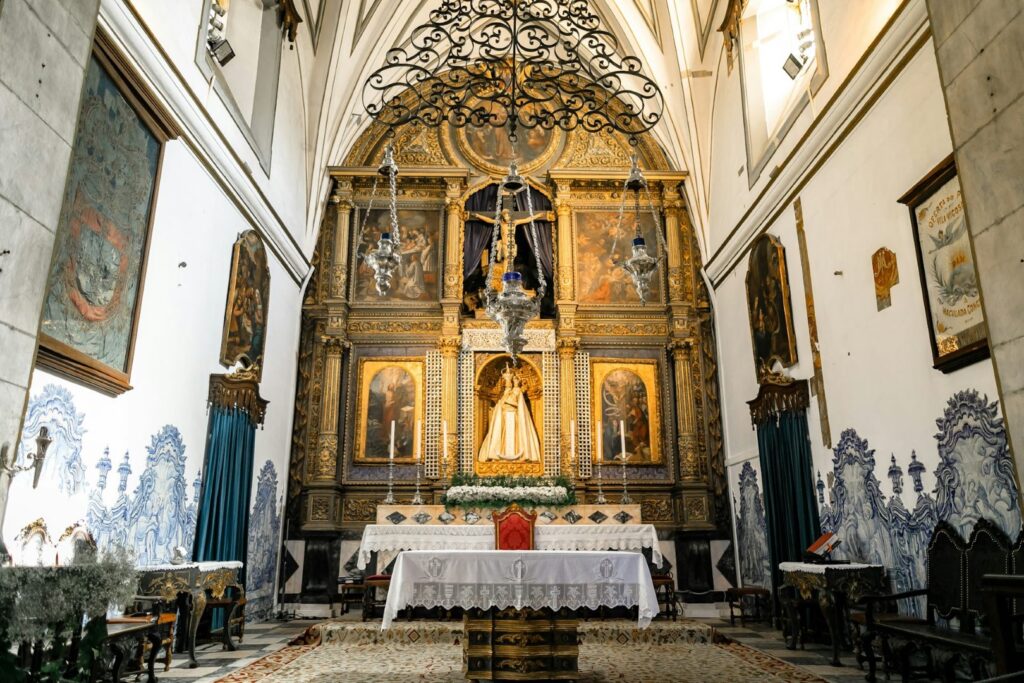
5. Modern Church Architecture
Historical Background
Modern church architecture, emerging in the 20th century, reflects changes in liturgical practices, technological advancements, and new aesthetic sensibilities. Architects began to experiment with new materials and forms, leading to innovative and diverse designs.
Key Features
- Simplified Forms: Modern churches often feature clean lines, simple forms, and minimal ornamentation, focusing on function and spirituality.
- Innovative Materials: The use of new materials, such as steel, glass, and reinforced concrete, allowed for greater flexibility in design.
- Natural Light: Emphasis on natural light and openness, often achieved through large windows and skylights, creates a sense of connection with the outside world.
- Functional Spaces: Modern churches are designed to accommodate various functions, including worship, community activities, and social services.
Conclusion
The evolution of church architecture is a testament to humanity’s enduring quest to create spaces that inspire, uplift, and connect us to the divine. From the sturdy Romanesque structures to the awe-inspiring Gothic cathedrals and the innovative modern designs, each architectural style reflects the values, beliefs, and technological capabilities of its time. Exploring these architectural masterpieces offers not only a glimpse into the past but also an appreciation for the creativity and devotion that continue to shape our sacred spaces.
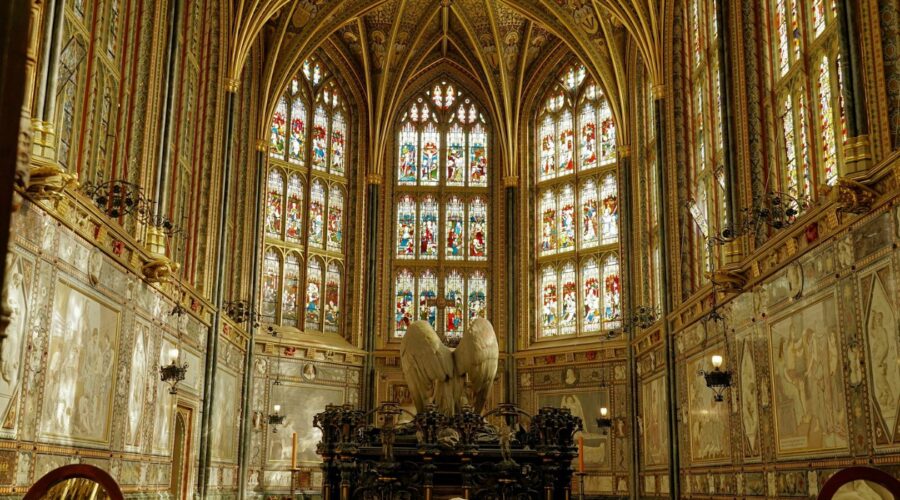
Privacy Policy
Privacy Policy
1. An overview of data protection
General
The following gives a simple overview of what happens to your personal information when you visit our website. Personal information is any data with which you could be personally identified. Detailed information on the subject of data protection can be found in our privacy policy found below.
Data collection on our website
Who is responsible for the data collection on this website?
The data collected on this website are processed by the website operator. The operator’s contact details can be found in the website’s required legal notice.
How do we collect your data?
Some data are collected when you provide it to us. This could, for example, be data you enter on a contact form.
Other data are collected automatically by our IT systems when you visit the website. These data are primarily technical data such as the browser and operating system you are using or when you accessed the page. These data are collected automatically as soon as you enter our website.
What do we use your data for?
Part of the data is collected to ensure the proper functioning of the website. Other data can be used to analyze how visitors use the site.
What rights do you have regarding your data?
You always have the right to request information about your stored data, its origin, its recipients, and the purpose of its collection at no charge. You also have the right to request that it be corrected, blocked, or deleted. You can contact us at any time using the address given in the legal notice if you have further questions about the issue of privacy and data protection. You may also, of course, file a complaint with the competent regulatory authorities.
Analytics and third-party tools
When visiting our website, statistical analyses may be made of your surfing behavior. This happens primarily using cookies and analytics. The analysis of your surfing behavior is usually anonymous, i.e. we will not be able to identify you from this data. You can object to this analysis or prevent it by not using certain tools. Detailed information can be found in the following privacy policy.
You can object to this analysis. We will inform you below about how to exercise your options in this regard.
2. General information and mandatory information
Data protection
The operators of this website take the protection of your personal data very seriously. We treat your personal data as confidential and in accordance with the statutory data protection regulations and this privacy policy.
If you use this website, various pieces of personal data will be collected. Personal information is any data with which you could be personally identified. This privacy policy explains what information we collect and what we use it for. It also explains how and for what purpose this happens.
Please note that data transmitted via the internet (e.g. via email communication) may be subject to security breaches. Complete protection of your data from third-party access is not possible.
Notice concerning the party responsible for this website
The party responsible for processing data on this website is:
Holy Compass
Dohany u. 30
1074
Budapest
HungaryContact:
Email: [email protected]The responsible party is the natural or legal person who alone or jointly with others decides on the purposes and means of processing personal data (names, email addresses, etc.).
Revocation of your consent to the processing of your data
Many data processing operations are only possible with your express consent. You may revoke your consent at any time with future effect. An informal email making this request is sufficient. The data processed before we receive your request may still be legally processed.
Right to file complaints with regulatory authorities
If there has been a breach of data protection legislation, the person affected may file a complaint with the competent regulatory authorities. The competent regulatory authority for matters related to data protection legislation is the data protection officer of the German state in which our company is headquartered. A list of data protection officers and their contact details can be found at the following link: https://www.bfdi.bund.de/DE/Infothek/Anschriften_Links/anschriften_links-node.html.
Right to data portability
You have the right to have data which we process based on your consent or in fulfillment of a contract automatically delivered to yourself or to a third party in a standard, machine-readable format. If you require the direct transfer of data to another responsible party, this will only be done to the extent technically feasible.
SSL or TLS encryption
This site uses SSL or TLS encryption for security reasons and for the protection of the transmission of confidential content, such as the inquiries you send to us as the site operator. You can recognize an encrypted connection in your browser’s address line when it changes from “http://” to “https://” and the lock icon is displayed in your browser’s address bar.
If SSL or TLS encryption is activated, the data you transfer to us cannot be read by third parties.
Encrypted payments on this website
If you enter into a contract which requires you to send us your payment information (e.g. account number for direct debits), we will require this data to process your payment.
Payment transactions using common means of payment (Visa/MasterCard, direct debit) are only made via encrypted SSL or TLS connections. You can recognize an encrypted connection in your browser’s address line when it changes from “http://” to “https://” and the lock icon in your browser line is visible.
In the case of encrypted communication, any payment details you submit to us cannot be read by third parties.
Information, blocking, deletion
As permitted by law, you have the right to be provided at any time with information free of charge about any of your personal data that is stored as well as its origin, the recipient and the purpose for which it has been processed. You also have the right to have this data corrected, blocked or deleted. You can contact us at any time using the address given in our legal notice if you have further questions on the topic of personal data.
Opposition to promotional emails
We hereby expressly prohibit the use of contact data published in the context of website legal notice requirements with regard to sending promotional and informational materials not expressly requested. The website operator reserves the right to take specific legal action if unsolicited advertising material, such as email spam, is received.
3. Data collection on our website
Cookies
Some of our web pages use cookies. Cookies do not harm your computer and do not contain any viruses. Cookies help make our website more user-friendly, efficient, and secure. Cookies are small text files that are stored on your computer and saved by your browser.
Most of the cookies we use are so-called “session cookies.” They are automatically deleted after your visit. Other cookies remain in your device’s memory until you delete them. These cookies make it possible to recognize your browser when you next visit the site.
You can configure your browser to inform you about the use of cookies so that you can decide on a case-by-case basis whether to accept or reject a cookie. Alternatively, your browser can be configured to automatically accept cookies under certain conditions or to always reject them, or to automatically delete cookies when closing your browser. Disabling cookies may limit the functionality of this website.
Cookies which are necessary to allow electronic communications or to provide certain functions you wish to use (such as the shopping cart) are stored pursuant to Art. 6 paragraph 1, letter f of DSGVO. The website operator has a legitimate interest in the storage of cookies to ensure an optimized service provided free of technical errors. If other cookies (such as those used to analyze your surfing behavior) are also stored, they will be treated separately in this privacy policy.
Server log files
The website provider automatically collects and stores information that your browser automatically transmits to us in “server log files”. These are:
- Browser type and browser version
- Operating system used
- Referrer URL
- Host name of the accessing computer
- Time of the server request
- IP address
These data will not be combined with data from other sources.
The basis for data processing is Art. 6 (1) (b) DSGVO, which allows the processing of data to fulfill a contract or for measures preliminary to a contract.
Contact form
Should you send us questions via the contact form, we will collect the data entered on the form, including the contact details you provide, to answer your question and any follow-up questions. We do not share this information without your permission.
We will, therefore, process any data you enter onto the contact form only with your consent per Art. 6 (1)(a) DSGVO. You may revoke your consent at any time. An informal email making this request is sufficient. The data processed before we receive your request may still be legally processed.
We will retain the data you provide on the contact form until you request its deletion, revoke your consent for its storage, or the purpose for its storage no longer pertains (e.g. after fulfilling your request). Any mandatory statutory provisions, especially those regarding mandatory data retention periods, remain unaffected by this provision.
Registration on this website
You can register on our website in order to access additional functions offered here. The input data will only be used for the purpose of using the respective site or service for which you have registered. The mandatory information requested during registration must be provided in full. Otherwise, we will reject your registration.
To inform you about important changes such as those within the scope of our site or technical changes, we will use the email address specified during registration.
We will process the data provided during registration only based on your consent per Art. 6 (1)(a) DSGVO. You may revoke your consent at any time with future effect. An informal email making this request is sufficient. The data processed before we receive your request may still be legally processed.
We will continue to store the data collected during registration for as long as you remain registered on our website. Statutory retention periods remain unaffected.
Leaving comments on this website
If you use the comment function on this site, the time at which you created the comment and your email address will be stored along with your comment, as well as your username, unless you are posting anonymously.
Storage of the IP address
Our comment function stores the IP addresses of those users who post comments. Since we do not check comments on our site before they go live, we need this information to be able to pursue action for illegal or slanderous content.
Subscribing to the comment feed
As a user of this site, you can sign up to receive the comment feed after registering. Your email address will be checked with a confirmation email. You can unsubscribe from this function at any time by clicking the link in the emails. The data provided when you subscribed to the comments feed will then be deleted, but if you have submitted this data to us for other purposes or elsewhere (such as subscribing to a newsletter), it will be retained.
How long comments are stored
The comments and the associated data (e.g. IP address) are stored and remain on our website until the content commented upon has been completely deleted or the comments are required to be removed for legal reasons (slander, etc.).
Legal basis
The comments are stored based on your consent per Art. 6 (1) (a) DSGVO. You may revoke your consent at any time with future effect. An informal email making this request is sufficient. The data processed before we receive your request may still be legally processed.
Processing of data (customer and contract data)
We collect, process, and use personal data only insofar as it is necessary to establish, or modify legal relationships with us (master data). This is done based on Art. 6 (1) (b) DSGVO, which allows the processing of data to fulfill a contract or for measures preliminary to a contract. We collect, process and use your personal data when accessing our website (usage data) only to the extent required to enable you to access our service or to bill you for the same.
Collected customer data shall be deleted after completion of the order or termination of the business relationship. Legal retention periods remain unaffected.
Data transmitted when entering into a contract with online shops, retailers, and mail order
We transmit personally identifiable data to third parties only to the extent required to fulfill the terms of your contract, for example, to companies entrusted to deliver goods to your location or banks entrusted to process your payments. Your data will not be transmitted for any other purpose unless you have given your express permission to do so. Your data will not be disclosed to third parties for advertising purposes without your express consent.
The basis for data processing is Art. 6 (1) (b) DSGVO, which allows the processing of data to fulfill a contract or for measures preliminary to a contract.
Data transferred when signing up for services and digital content
We transmit personally identifiable data to third parties only to the extent required to fulfill the terms of your contract with us, for example, to banks entrusted to process your payments.
Your data will not be transmitted for any other purpose unless you have given your express permission to do so. Your data will not be disclosed to third parties for advertising purposes without your express consent.
The basis for data processing is Art. 6 (1) (b) DSGVO, which allows the processing of data to fulfill a contract or for measures preliminary to a contract.
4. Analytics and advertising
Google Analytics
This website uses Google Analytics, a web analytics service. It is operated by Google Inc., 1600 Amphitheatre Parkway, Mountain View, CA 94043, USA.
Google Analytics uses so-called “cookies”. These are text files that are stored on your computer and that allow an analysis of the use of the website by you. The information generated by the cookie about your use of this website is usually transmitted to a Google server in the USA and stored there.
Google Analytics cookies are stored based on Art. 6 (1) (f) DSGVO. The website operator has a legitimate interest in analyzing user behavior to optimize both its website and its advertising.
IP anonymization
We have activated the IP anonymization feature on this website. Your IP address will be shortened by Google within the European Union or other parties to the Agreement on the European Economic Area prior to transmission to the United States. Only in exceptional cases is the full IP address sent to a Google server in the US and shortened there. Google will use this information on behalf of the operator of this website to evaluate your use of the website, to compile reports on website activity, and to provide other services regarding website activity and Internet usage for the website operator. The IP address transmitted by your browser as part of Google Analytics will not be merged with any other data held by Google.
Browser plugin
You can prevent these cookies being stored by selecting the appropriate settings in your browser. However, we wish to point out that doing so may mean you will not be able to enjoy the full functionality of this website. You can also prevent the data generated by cookies about your use of the website (incl. your IP address) from being passed to Google, and the processing of these data by Google, by downloading and installing the browser plugin available at the following link: https://tools.google.com/dlpage/gaoptout?hl=en.
For more information about how Google Analytics handles user data, see Google’s privacy policy: https://support.google.com/analytics/answer/6004245?hl=en.
Outsourced data processing
We have entered into an agreement with Google for the outsourcing of our data processing and fully implement the strict requirements of the German data protection authorities when using Google Analytics.
Demographic data collection by Google Analytics
This website uses Google Analytics’ demographic features. This allows reports to be generated containing statements about the age, gender, and interests of site visitors. This data comes from interest-based advertising from Google and third-party visitor data. This collected data cannot be attributed to any specific individual person. You can disable this feature at any time by adjusting the ads settings in your Google account or you can forbid the collection of your data by Google Analytics as described in the section “Refusal of data collection”.
Google Analytics Remarketing
Our websites use the features of Google Analytics Remarketing combined with the cross-device capabilities of Google AdWords and DoubleClick. This service is provided by Google Inc., 1600 Amphitheater Parkway, Mountain View, CA 94043, USA.
This feature makes it possible to link target audiences for promotional marketing created with Google Analytics Remarketing to the cross-device capabilities of Google AdWords and Google DoubleClick. This allows advertising to be displayed based on your personal interests, identified based on your previous usage and surfing behavior on one device (e.g. your mobile phone), on other devices (such as a tablet or computer).
Once you have given your consent, Google will associate your web and app browsing history with your Google Account for this purpose. That way, any device that signs in to your Google Account can use the same personalized promotional messaging.
To support this feature, Google Analytics collects Google-authenticated IDs of users that are temporarily linked to our Google Analytics data to define and create audiences for cross-device ad promotion.
You can permanently opt out of cross-device remarketing/targeting by turning off personalized advertising in your Google Account; follow this link: https://www.google.com/settings/ads/onweb/.
The aggregation of the data collected in your Google Account data is based solely on your consent, which you may give or withdraw from Google per Art. 6 (1) (a) DSGVO. For data collection operations not merged into your Google Account (for example, because you do not have a Google Account or have objected to the merge), the collection of data is based on Art. 6 (1) (f) DSGVO. The website operator has a legitimate interest in analyzing anonymous user behavior for promotional purposes.
For more information and the Google Privacy Policy, go to: https://www.google.com/policies/technologies/ads/.
Google AdWords and Google Conversion Tracking
This website uses Google AdWords. AdWords is an online advertising program from Google Inc., 1600 Amphitheater Parkway, Mountain View, CA 94043, United States (“Google”).
As part of Google AdWords, we use so-called conversion tracking. When you click on an ad served by Google, a conversion tracking cookie is set. Cookies are small text files that your internet browser stores on your computer. These cookies expire after 30 days and are not used for personal identification of the user. Should the user visit certain pages of the website and the cookie has not yet expired, Google and the website can tell that the user clicked on the ad and proceeded to that page.
Each Google AdWords advertiser has a different cookie. Thus, cookies cannot be tracked using the website of an AdWords advertiser. The information obtained using the conversion cookie is used to create conversion statistics for the AdWords advertisers who have opted for conversion tracking. Customers are told the total number of users who clicked on their ad and were redirected to a conversion tracking tag page. However, advertisers do not obtain any information that can be used to personally identify users. If you do not want to participate in tracking, you can opt-out of this by easily disabling the Google Conversion Tracking cookie by changing your browser settings. In doing so, you will not be included in the conversion tracking statistics.
Conversion cookies are stored based on Art. 6 (1) (f) DSGVO. The website operator has a legitimate interest in analyzing user behavior to optimize both its website and its advertising.
For more information about Google AdWords and Google Conversion Tracking, see the Google Privacy Policy: https://www.google.de/policies/privacy/.
You can configure your browser to inform you about the use of cookies so that you can decide on a case-by-case basis whether to accept or reject a cookie. Alternatively, your browser can be configured to automatically accept cookies under certain conditions or to always reject them, or to automatically delete cookies when closing your browser. Disabling cookies may limit the functionality of this website.
Facebook Pixel
Our website measures conversions using visitor action pixels from Facebook, Facebook Inc., 1601 S. California Ave, Palo Alto, CA 94304, USA (“Facebook”).
These allow the behavior of site visitors to be tracked after they click on a Facebook ad to reach the provider’s website. This allows an analysis of the effectiveness of Facebook advertisements for statistical and market research purposes and their future optimization.
The data collected is anonymous to us as operators of this website and we cannot use it to draw any conclusions about our users’ identities. However, the data are stored and processed by Facebook, which may make a connection to your Facebook profile and which may use the data for its own advertising purposes, as stipulated in the Facebook privacy policy. This will allow Facebook to display ads both on Facebook and on third-party sites. We have no control over how this data is used.
Check out Facebook’s privacy policy to learn more about protecting your privacy: https://www.facebook.com/about/privacy/.
You can also deactivate the custom audiences remarketing feature in the Ads Settings section at https://www.facebook.com/ads/preferences/?entry_product=ad_settings_screen. You will first need to log into Facebook.
If you do not have a Facebook account, you can opt out of usage-based advertising from Facebook on the website of the European Interactive Digital Advertising Alliance: http://www.youronlinechoices.com/de/praferenzmanagement/.
5. Newsletter
Newsletter data
If you would like to receive our newsletter, we require a valid email address as well as information that allows us to verify that you are the owner of the specified email address and that you agree to receive this newsletter. No additional data is collected or is only collected on a voluntary basis. We only use this data to send the requested information and do not pass it on to third parties.
We will, therefore, process any data you enter onto the contact form only with your consent per Art. 6 (1) (a) DSGVO. You can revoke consent to the storage of your data and email address as well as their use for sending the newsletter at any time, e.g. through the “unsubscribe” link in the newsletter. The data processed before we receive your request may still be legally processed.
The data provided when registering for the newsletter will be used to distribute the newsletter until you cancel your subscription when said data will be deleted. Data we have stored for other purposes (e.g. email addresses for the members area) remain unaffected.
MailChimp
This website uses the services of MailChimp to send newsletters. This service is provided by Rocket Science Group LLC, 675 Ponce De Leon Ave NE, Suite 5000, Atlanta, GA 30308, USA.
MailChimp is a service which organizes and analyzes the distribution of newsletters. If you provide data (e.g. your email address) to subscribe to our newsletter, it will be stored on MailChimp servers in the USA.
MailChimp is certified under the EU-US Privacy Shield. The Privacy Shield is an agreement between the European Union (EU) and the US to ensure compliance with European privacy standards in the United States.
We use MailChimp to analyze our newsletter campaigns. When you open an email sent by MailChimp, a file included in the email (called a web beacon) connects to MailChimp’s servers in the United States. This allows us to determine if a newsletter message has been opened and which links you click on. In addition, technical information is collected (e.g. time of retrieval, IP address, browser type, and operating system). This information cannot be assigned to a specific recipient. It is used exclusively for the statistical analysis of our newsletter campaigns. The results of these analyses can be used to better tailor future newsletters to your interests.
If you do not want your usage of the newsletter to be analyzed by MailChimp, you will have to unsubscribe from the newsletter. For this purpose, we provide a link in every newsletter we send. You can also unsubscribe from the newsletter directly on the website.
Data processing is based on Art. 6 (1) (a) DSGVO. You may revoke your consent at any time by unsubscribing to the newsletter. The data processed before we receive your request may still be legally processed.
The data provided when registering for the newsletter will be used to distribute the newsletter until you cancel your subscription when said data will be deleted from our servers and those of MailChimp. Data we have stored for other purposes (e.g. email addresses for the members area) remains unaffected.
For details, see the MailChimp privacy policy at https://mailchimp.com/legal/terms/.
Completion of a data processing agreement
We have entered into a data processing agreement with MailChimp, in which we require MailChimp to protect the data of our customers and not to disclose said data to third parties. This agreement may be viewed at the following link: https://mailchimp.com/legal/forms/data-processing-agreement/sample-agreement/.
6. Plugins and tools
YouTube
Our website uses plugins from YouTube, which is operated by Google. The operator of the pages is YouTube LLC, 901 Cherry Ave., San Bruno, CA 94066, USA.
If you visit one of our pages featuring a YouTube plugin, a connection to the YouTube servers is established. Here the YouTube server is informed about which of our pages you have visited.
If you’re logged in to your YouTube account, YouTube allows you to associate your browsing behavior directly with your personal profile. You can prevent this by logging out of your YouTube account.
YouTube is used to help make our website appealing. This constitutes a justified interest pursuant to Art. 6 (1) (f) DSGVO.
Further information about handling user data, can be found in the data protection declaration of YouTube under https://www.google.de/intl/de/policies/privacy.
Google Web Fonts
For uniform representation of fonts, this page uses web fonts provided by Google. When you open a page, your browser loads the required web fonts into your browser cache to display texts and fonts correctly.
When you call up a page of our website that contains a social plugin, your browser makes a direct connection with Google servers. Google thus becomes aware that our web page was accessed via your IP address. The use of Google Web fonts is done in the interest of a uniform and attractive presentation of our website. This constitutes a justified interest pursuant to Art. 6 (1) (f) DSGVO.
If your browser does not support web fonts, a standard font is used by your computer.
Further information about handling user data, can be found at https://developers.google.com/fonts/faq and in Google’s privacy policy at https://www.google.com/policies/privacy/.
Google Maps
This site uses the Google Maps map service via an API. It is operated by Google Inc., 1600 Amphitheatre Parkway, Mountain View, CA 94043, USA.
To use Google Maps, it is necessary to save your IP address. This information is generally transmitted to a Google server in the USA and stored there. The provider of this site has no influence on this data transfer.
The use of Google Maps is in the interest of making our website appealing and to facilitate the location of places specified by us on the website. This constitutes a justified interest pursuant to Art. 6 (1) (f) DSGVO.
Further information about handling user data, can be found in the data protection declaration of Google at https://www.google.de/intl/de/policies/privacy/.
